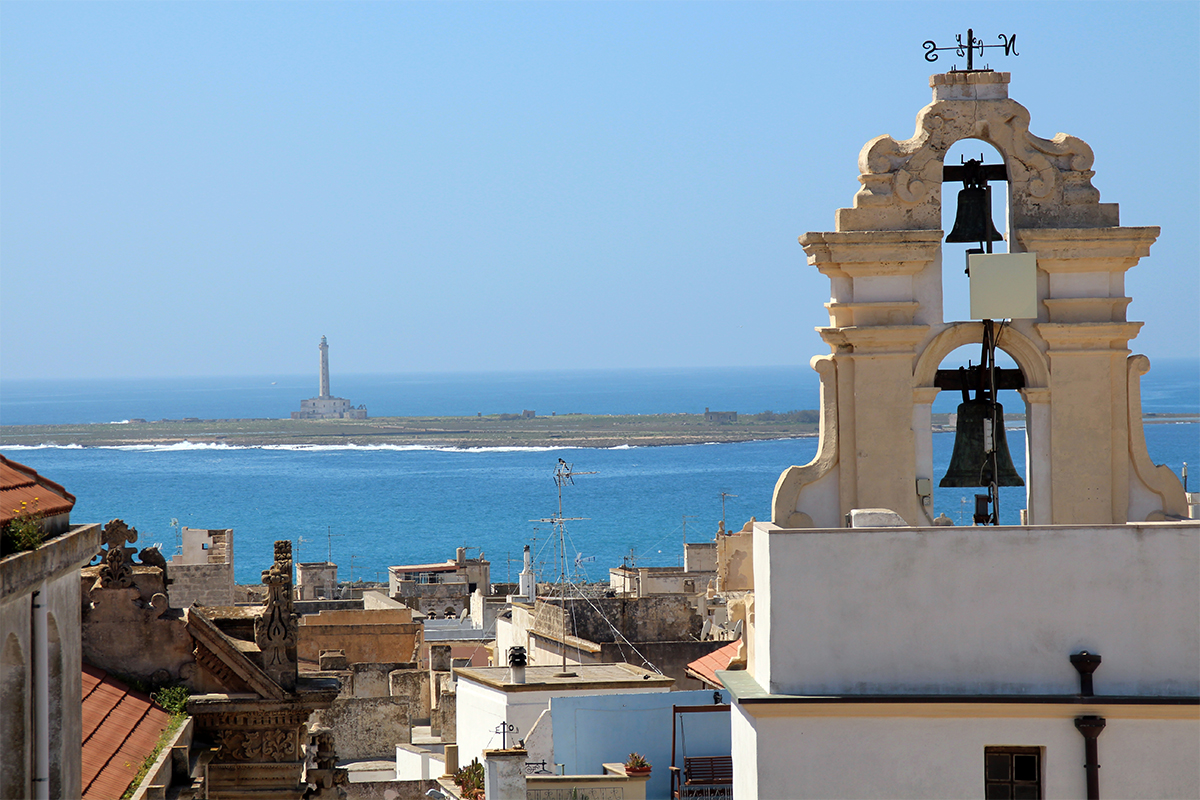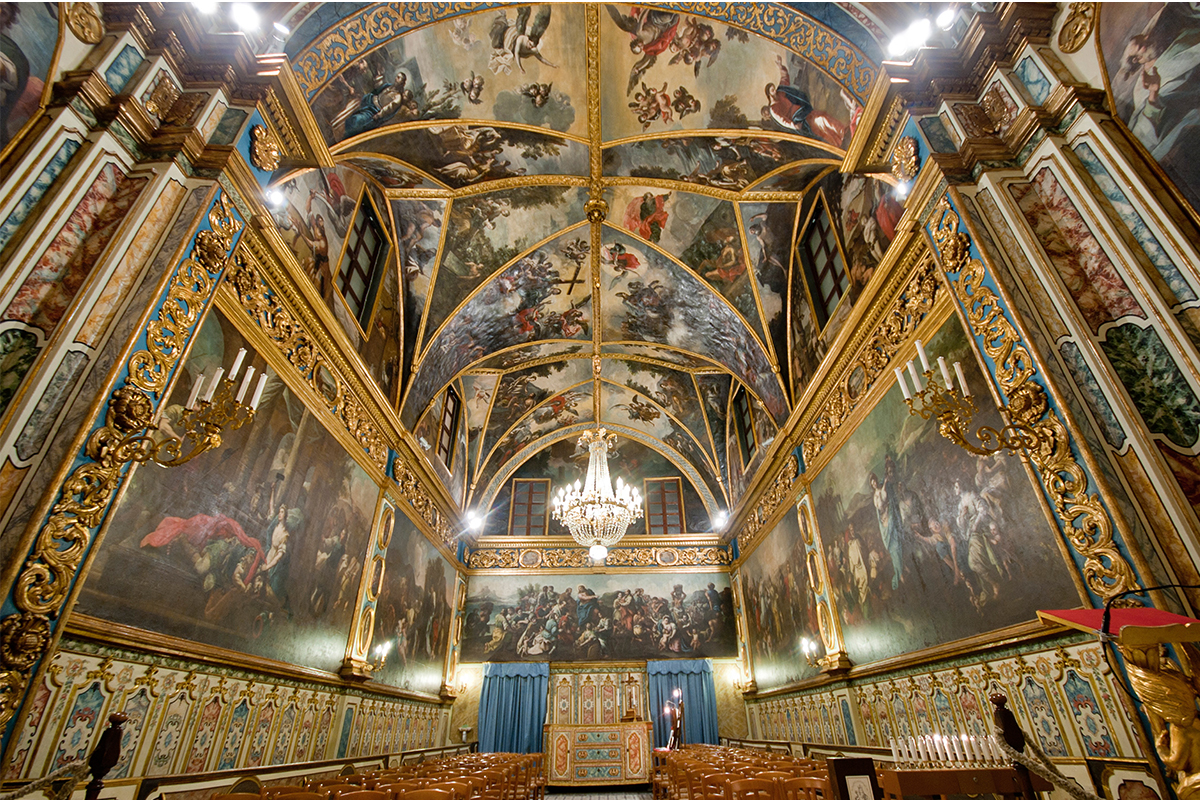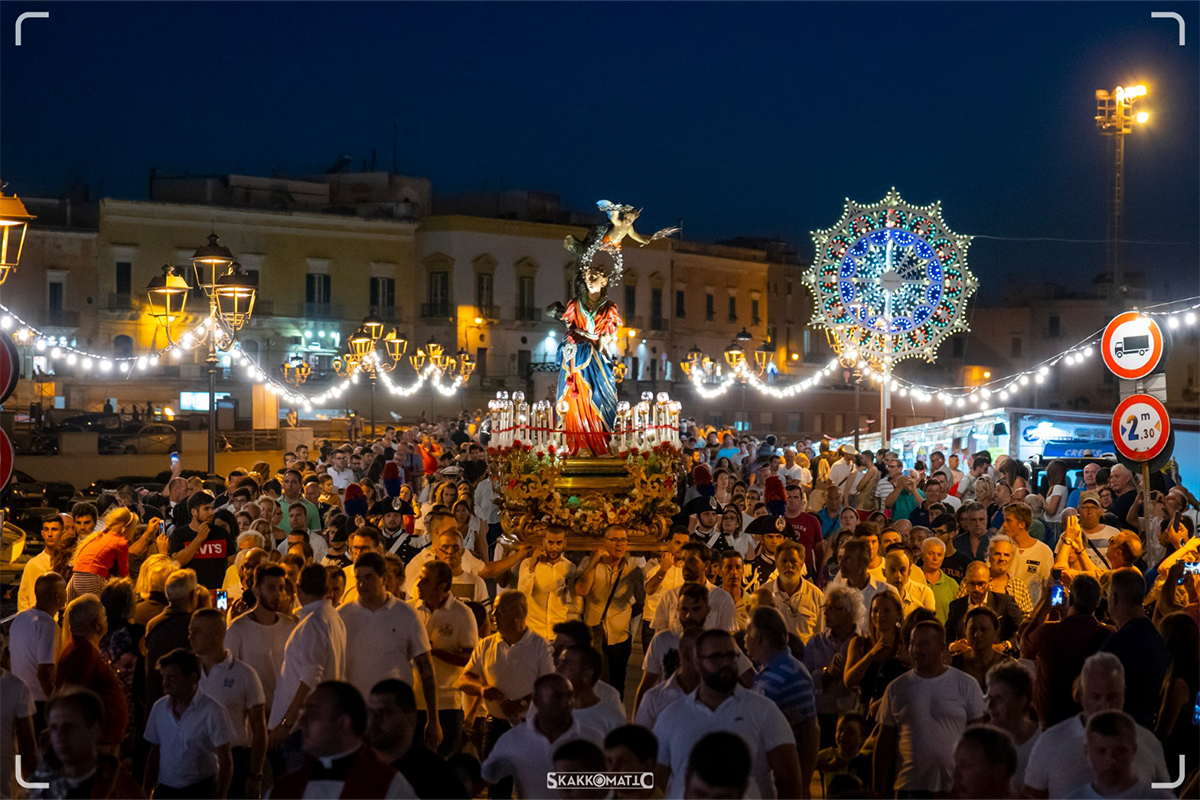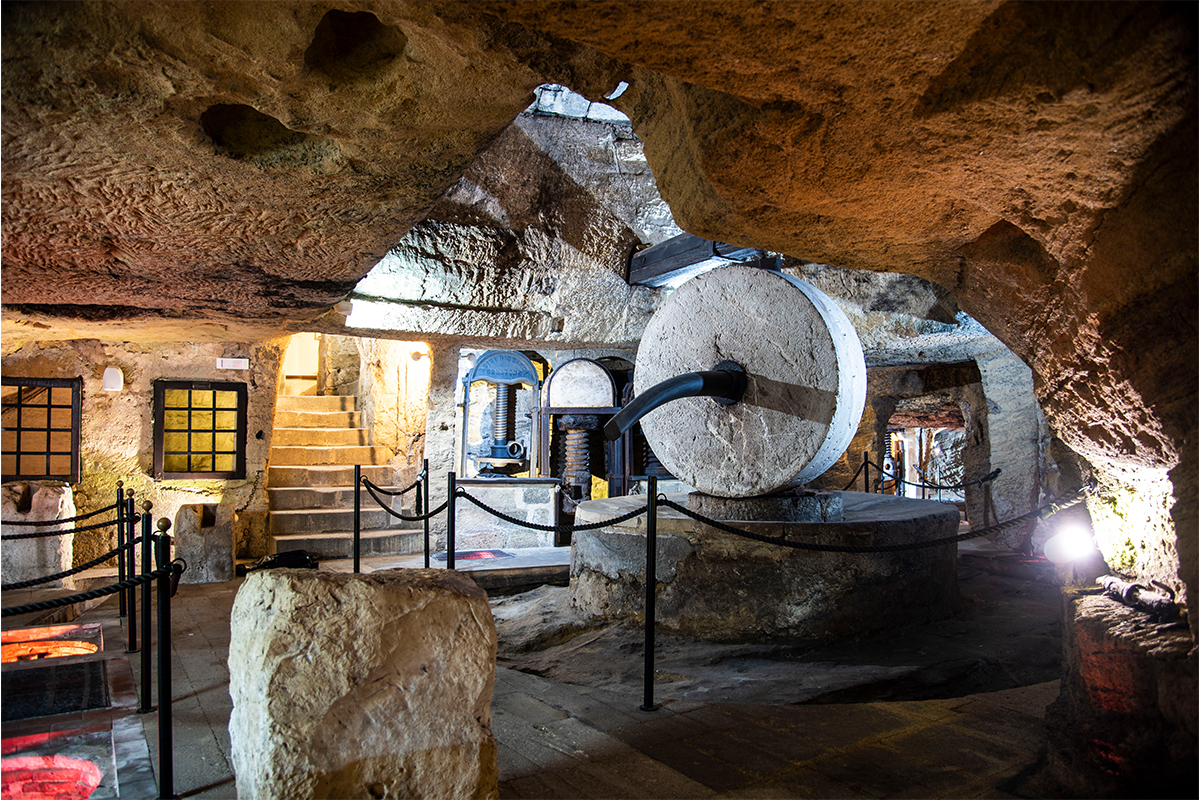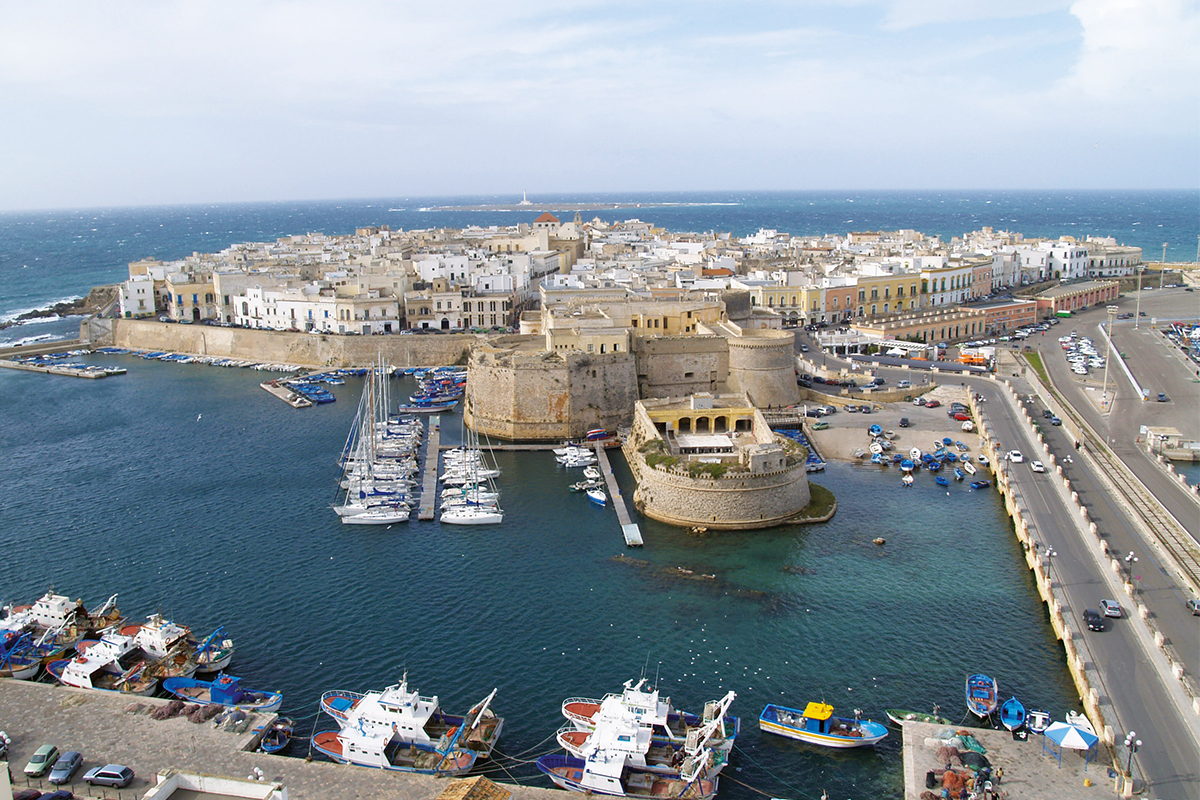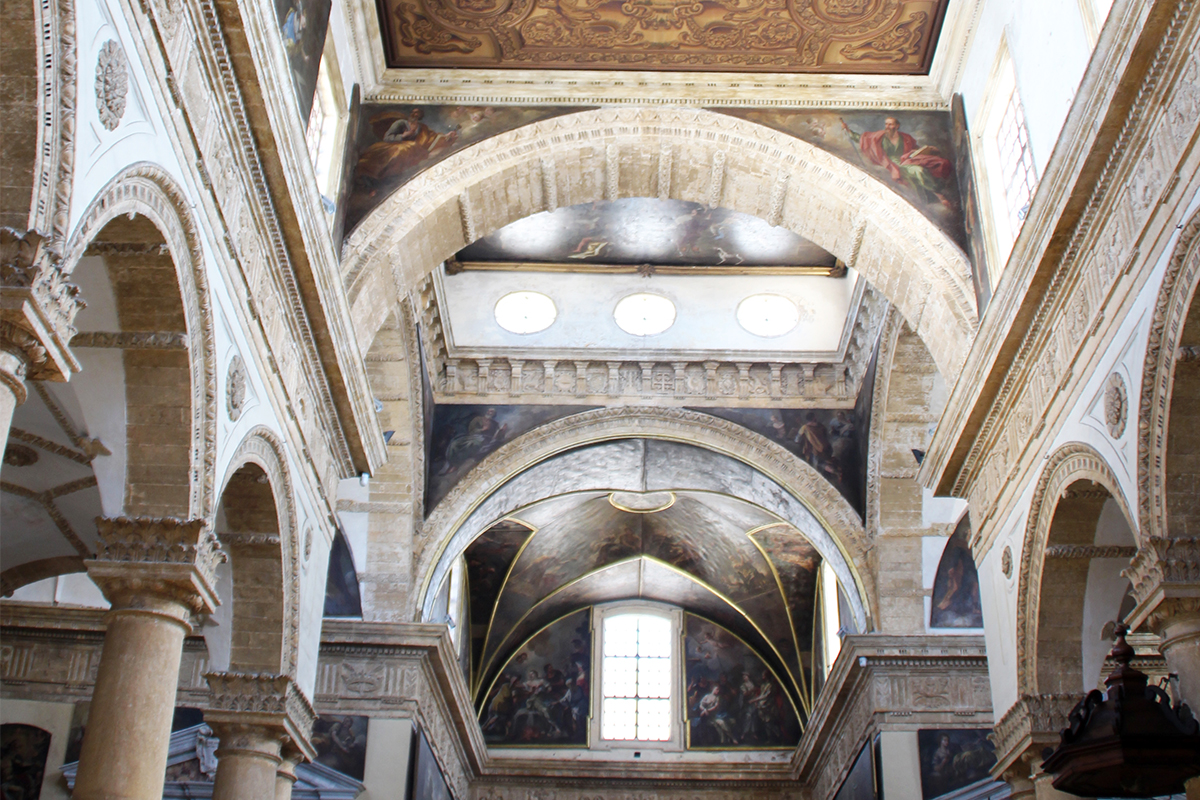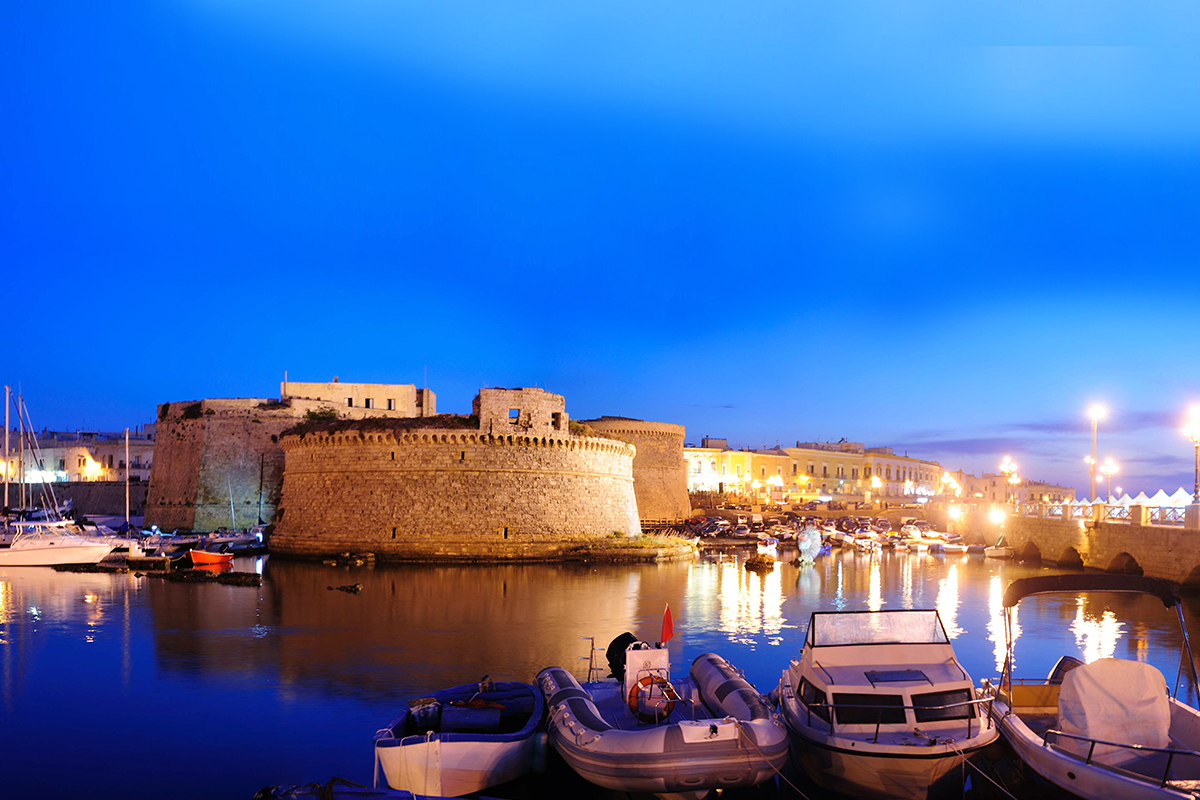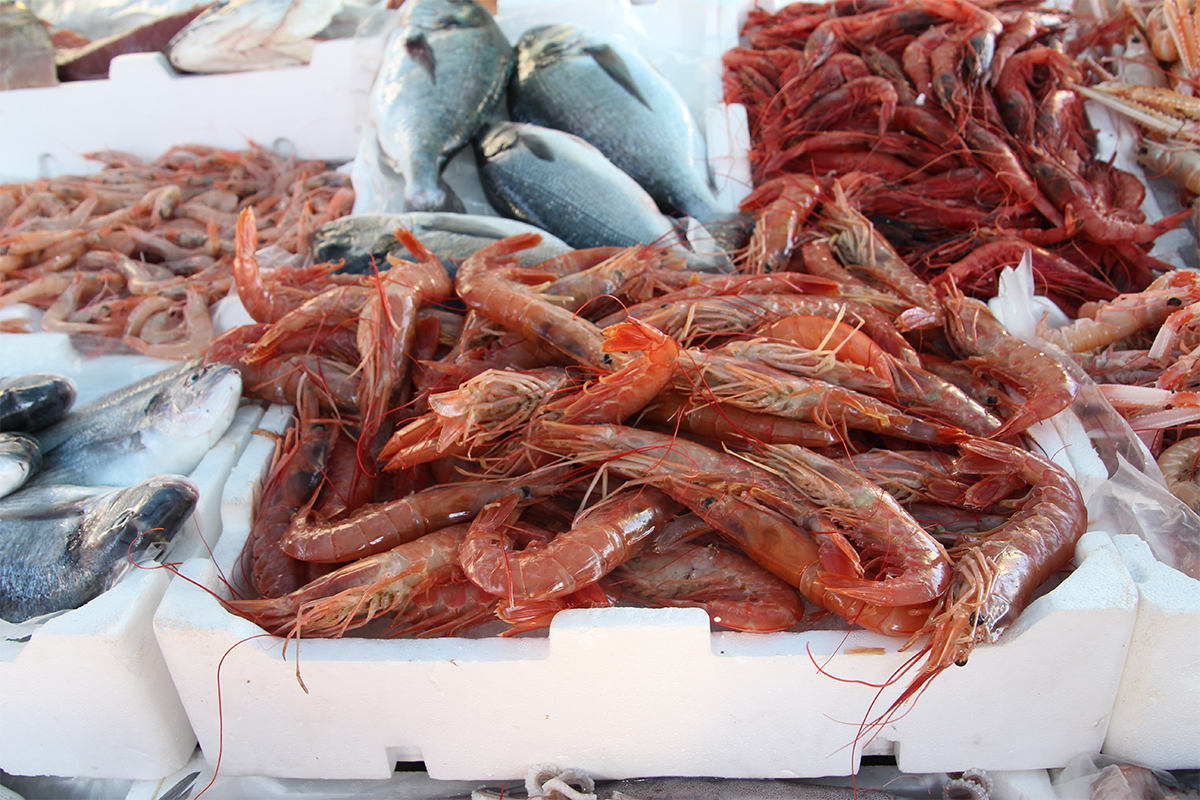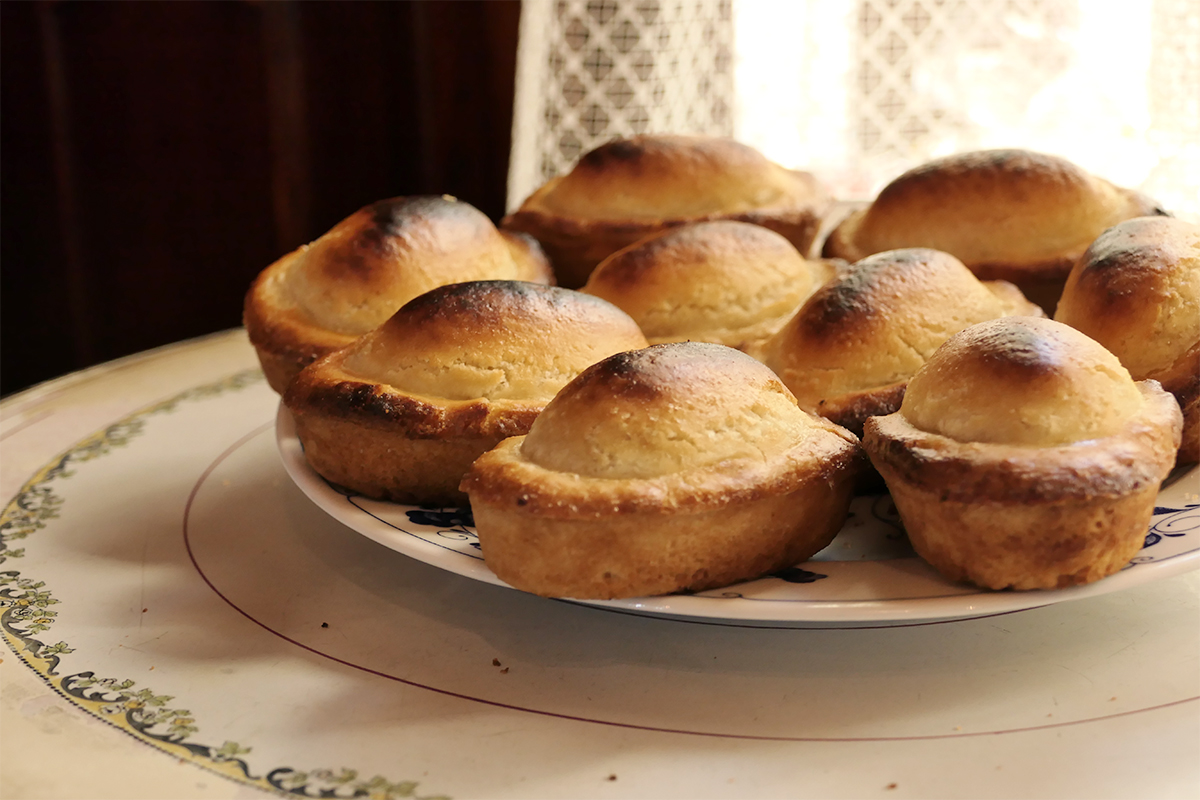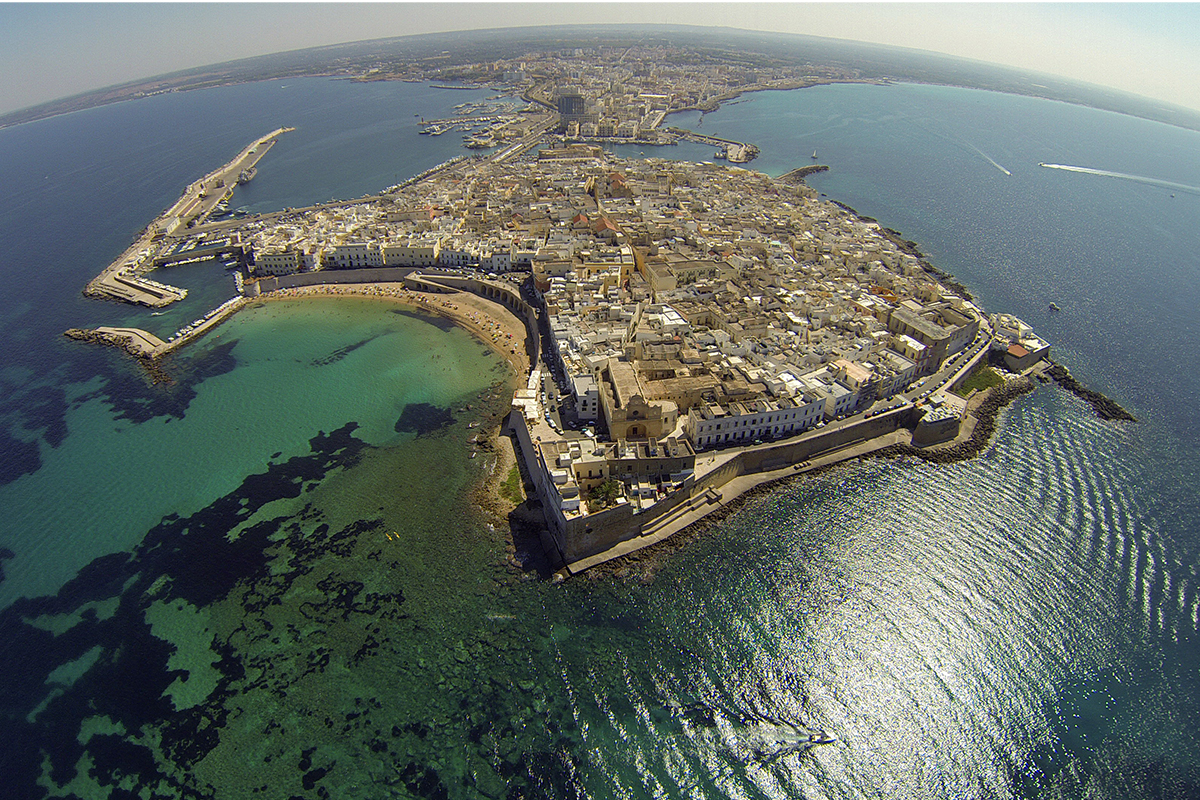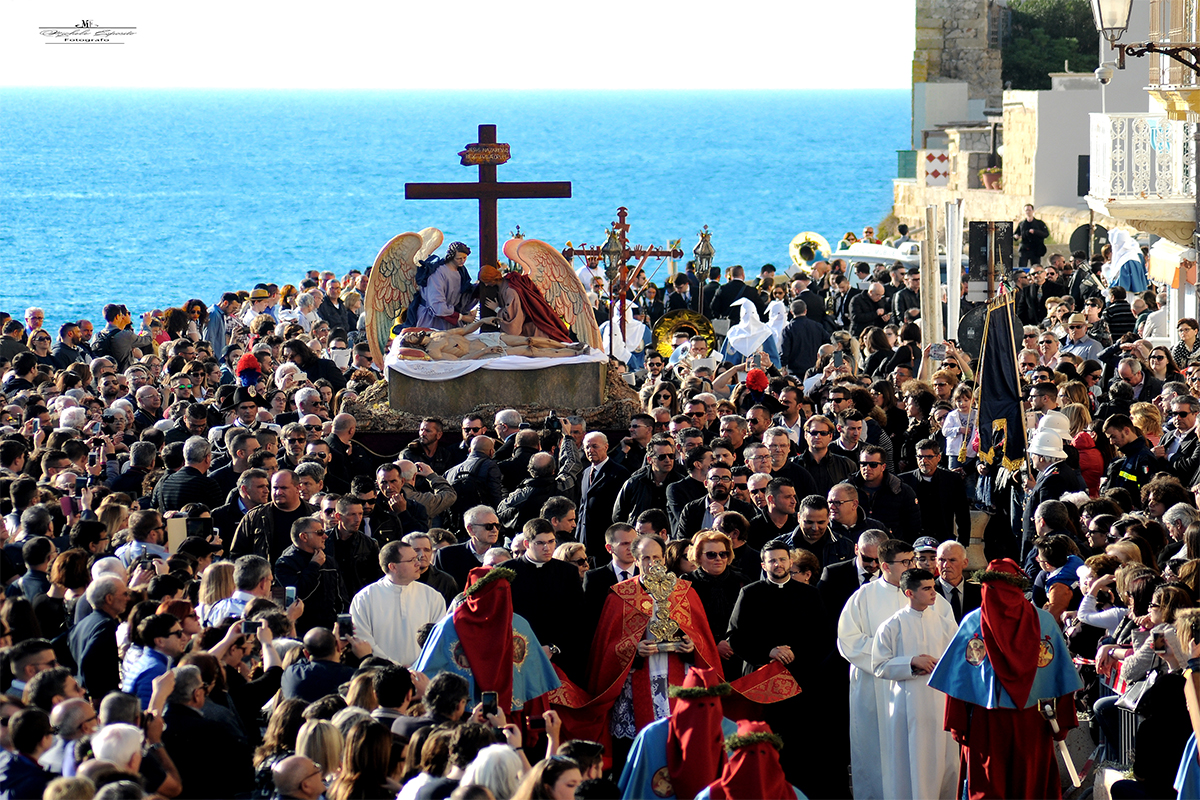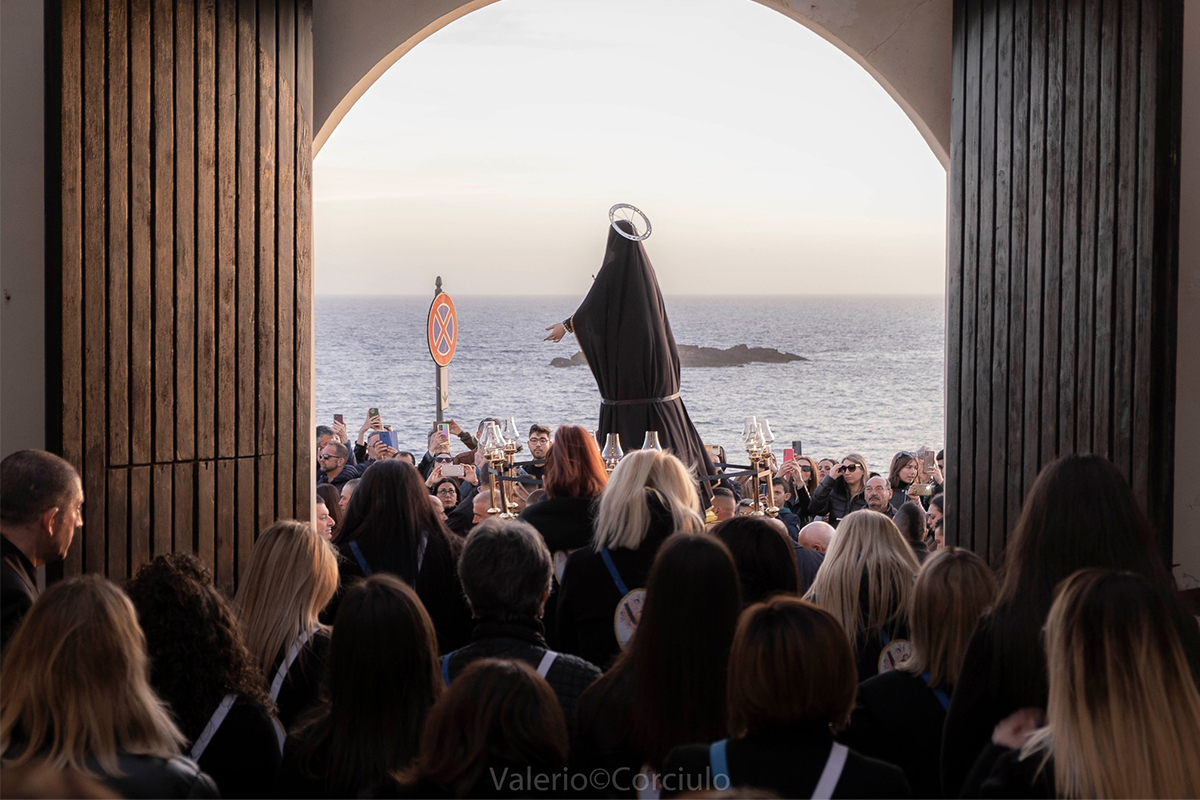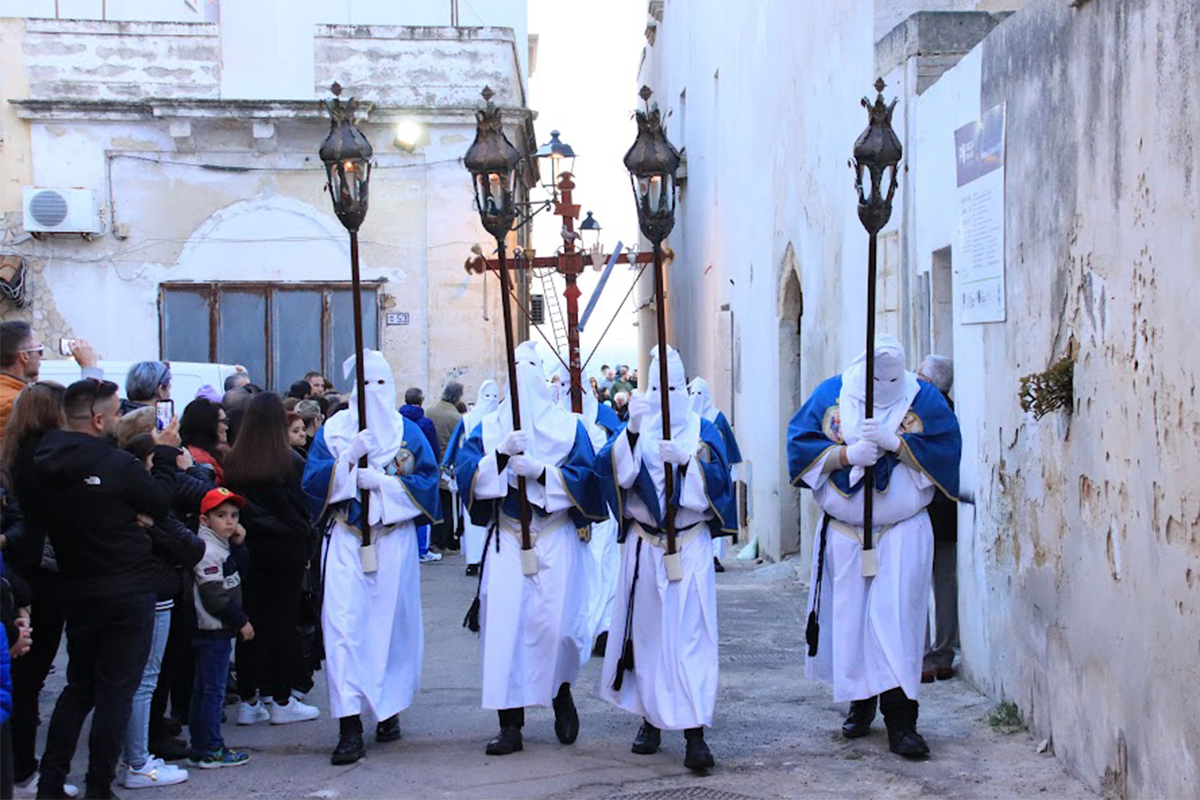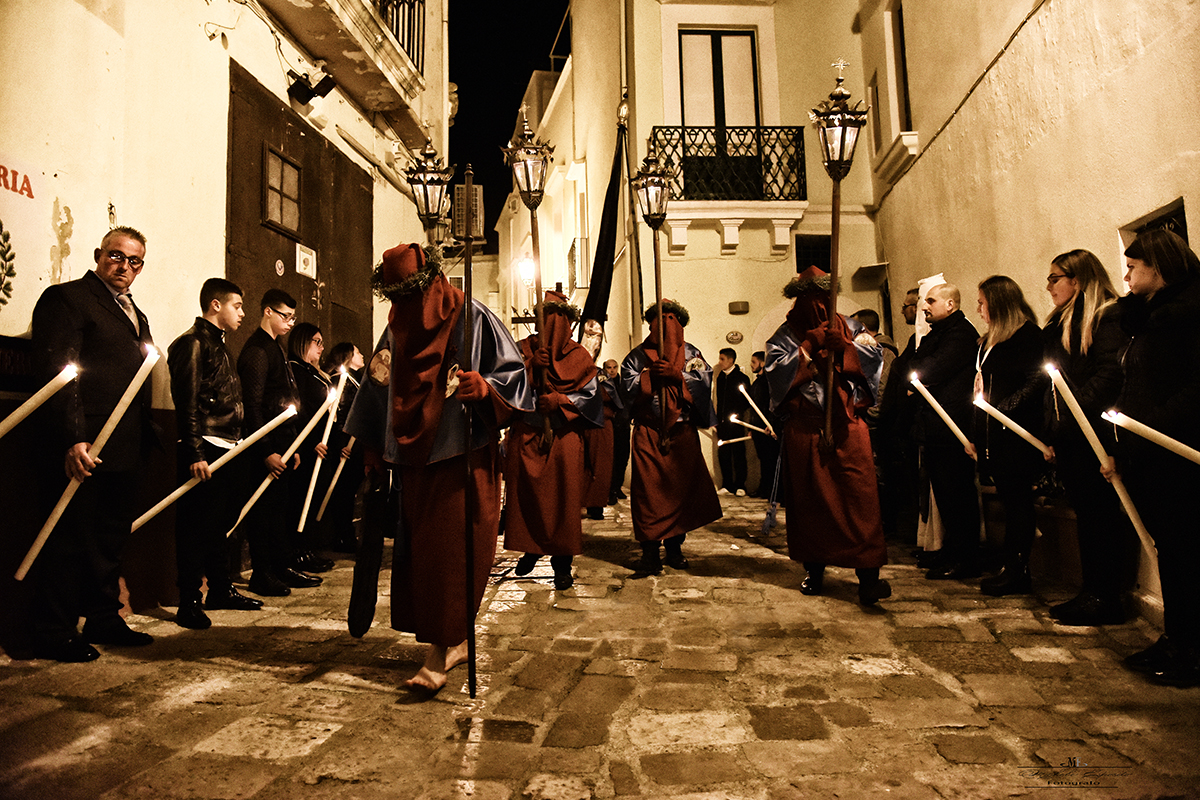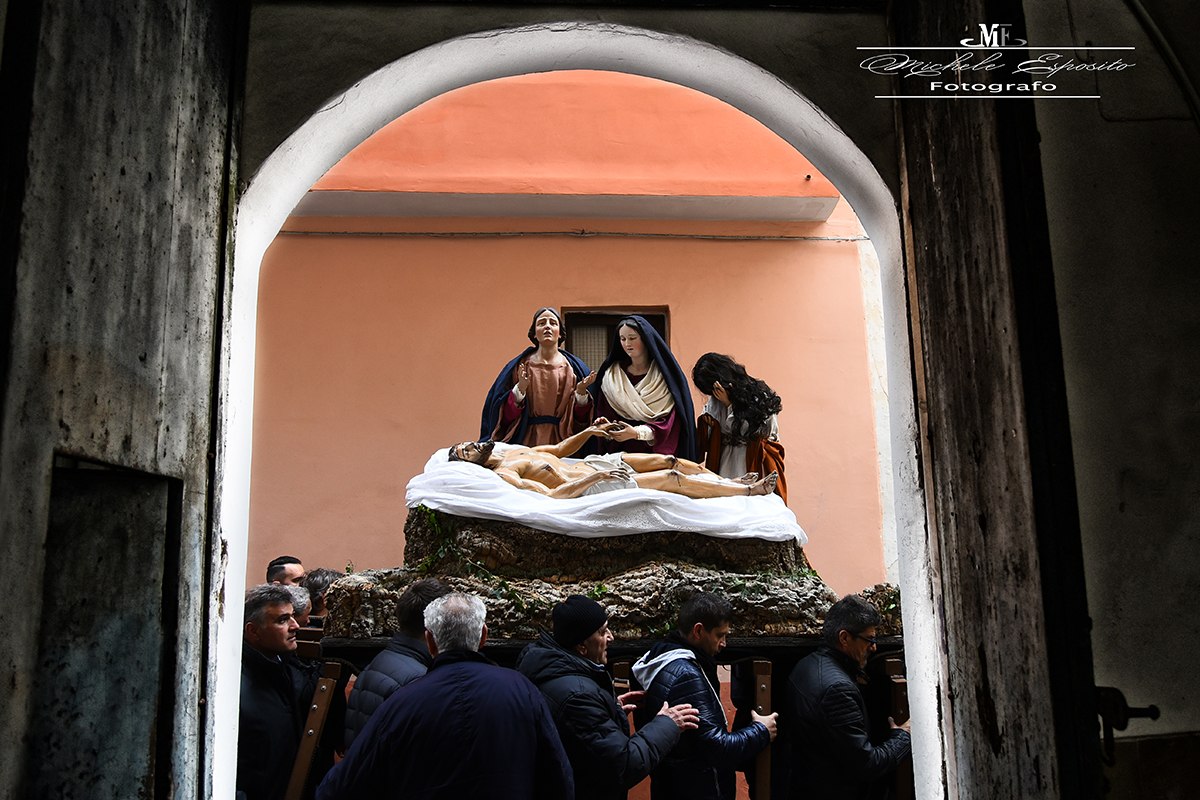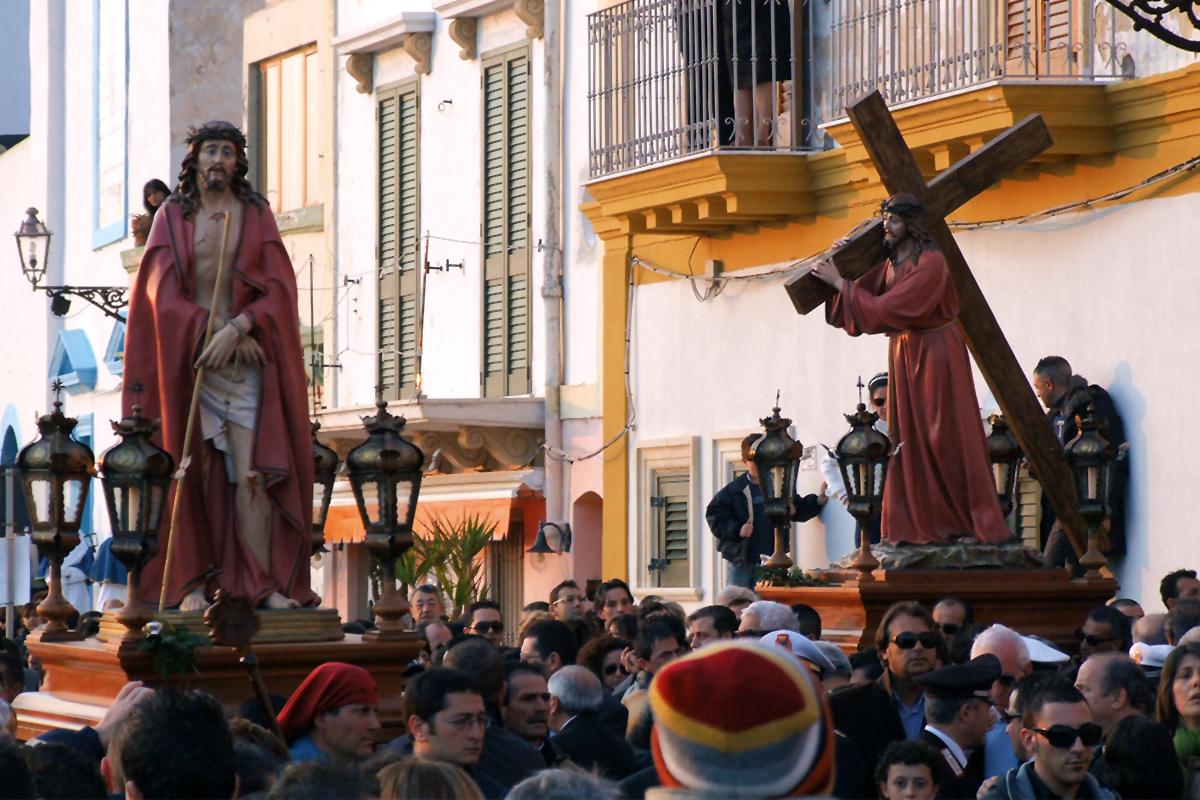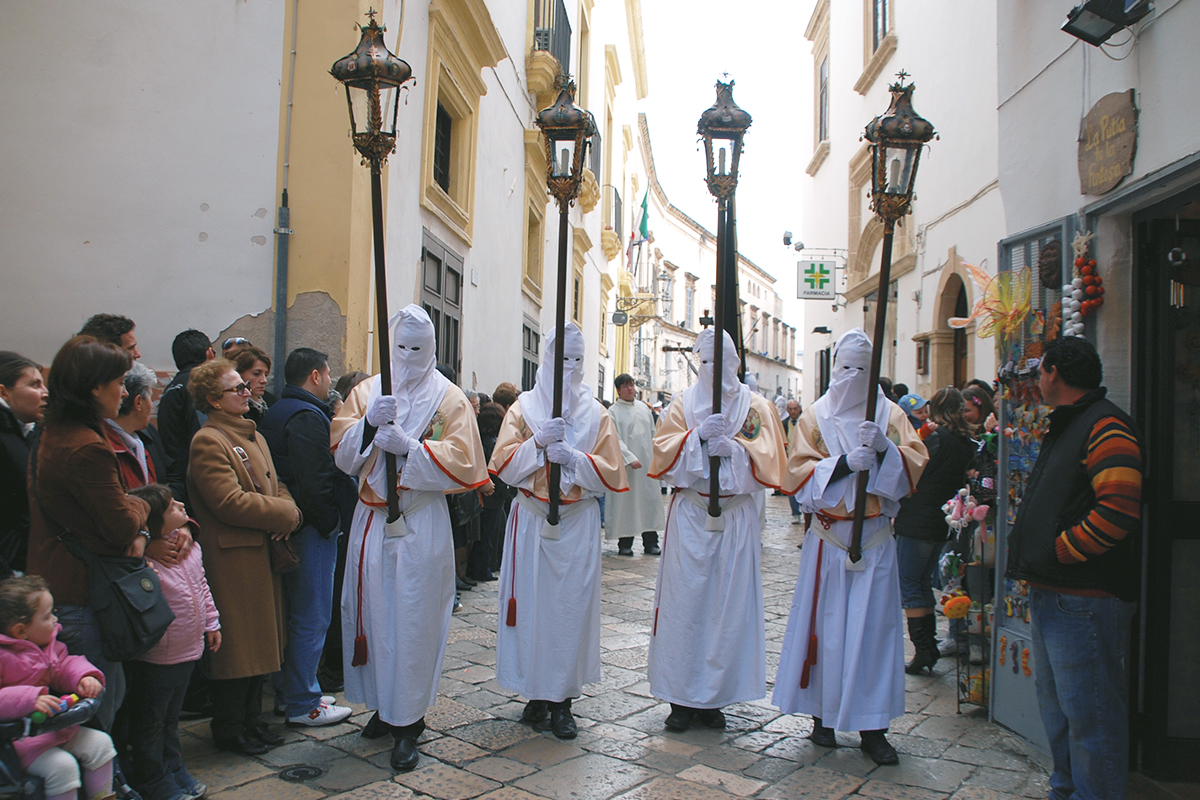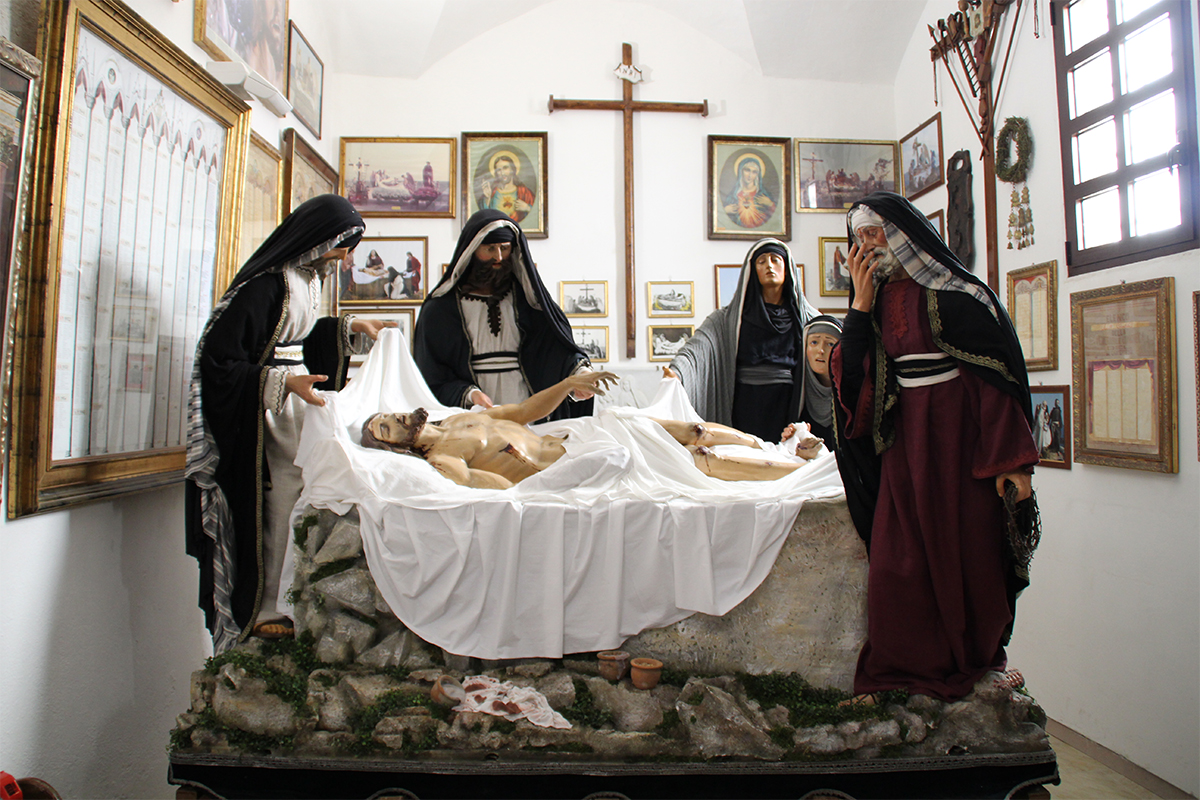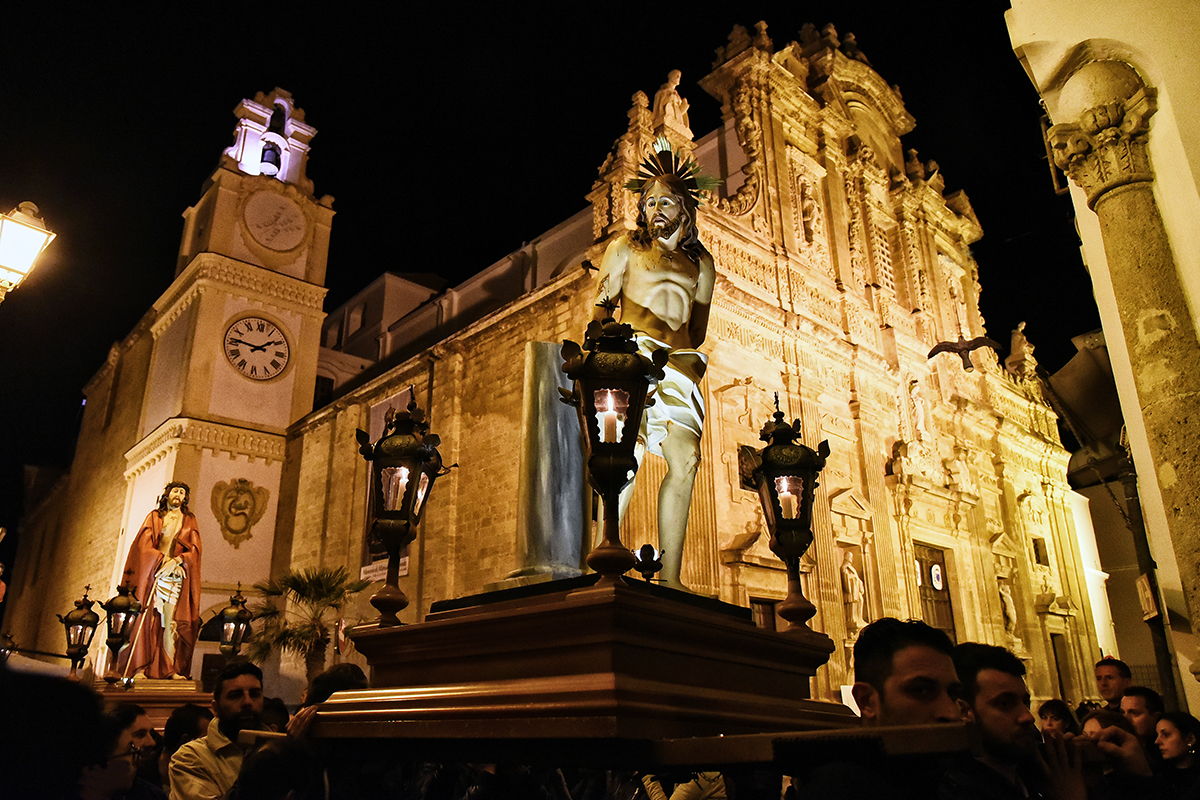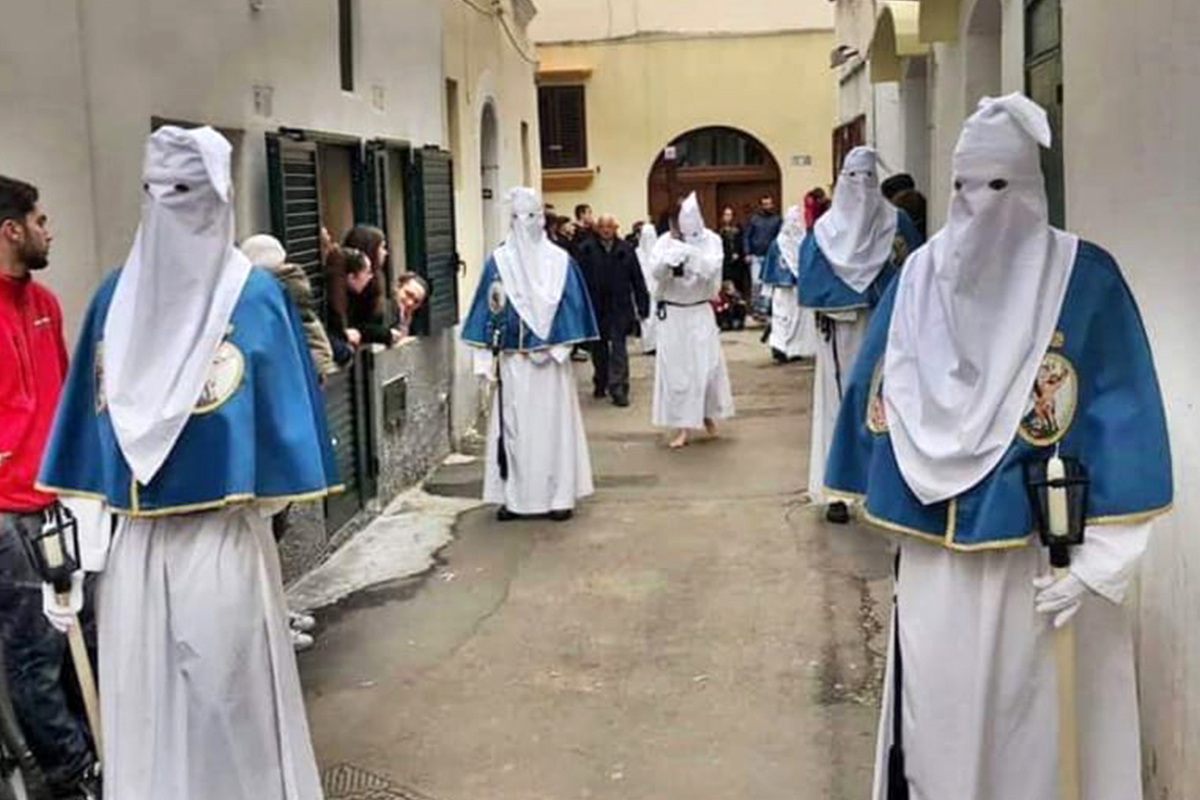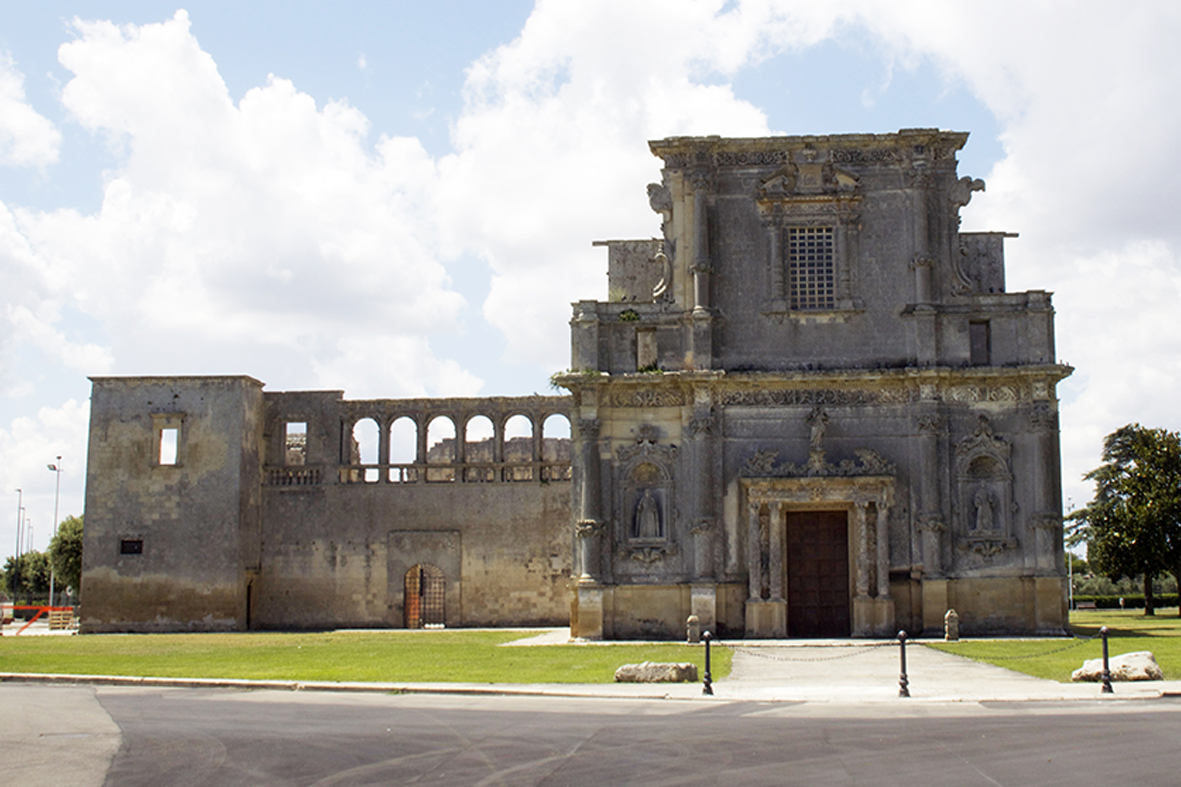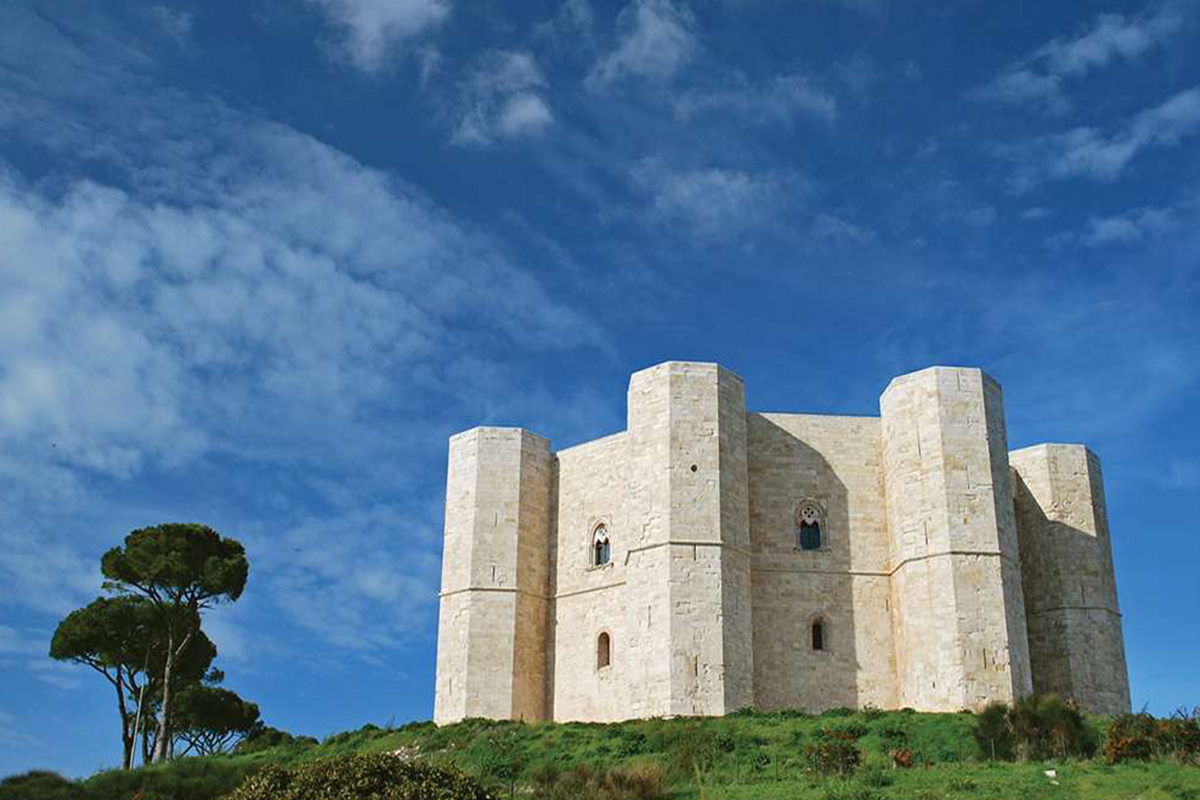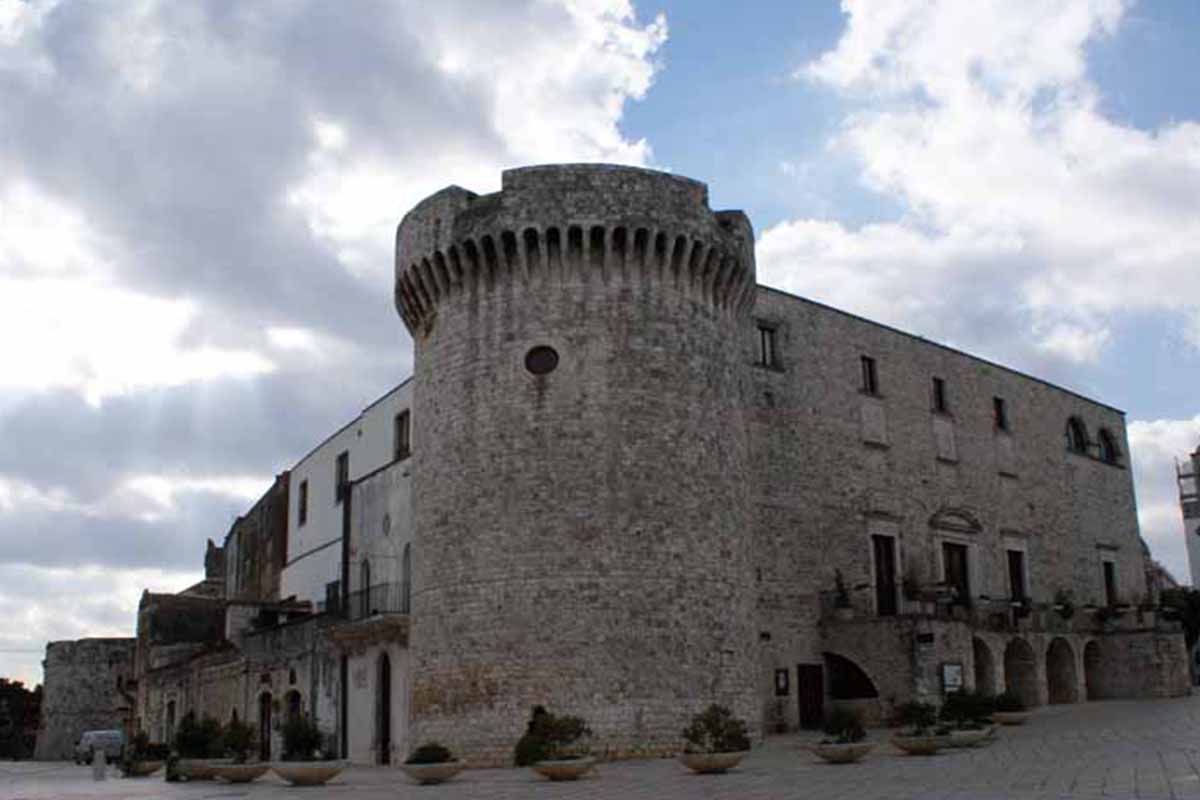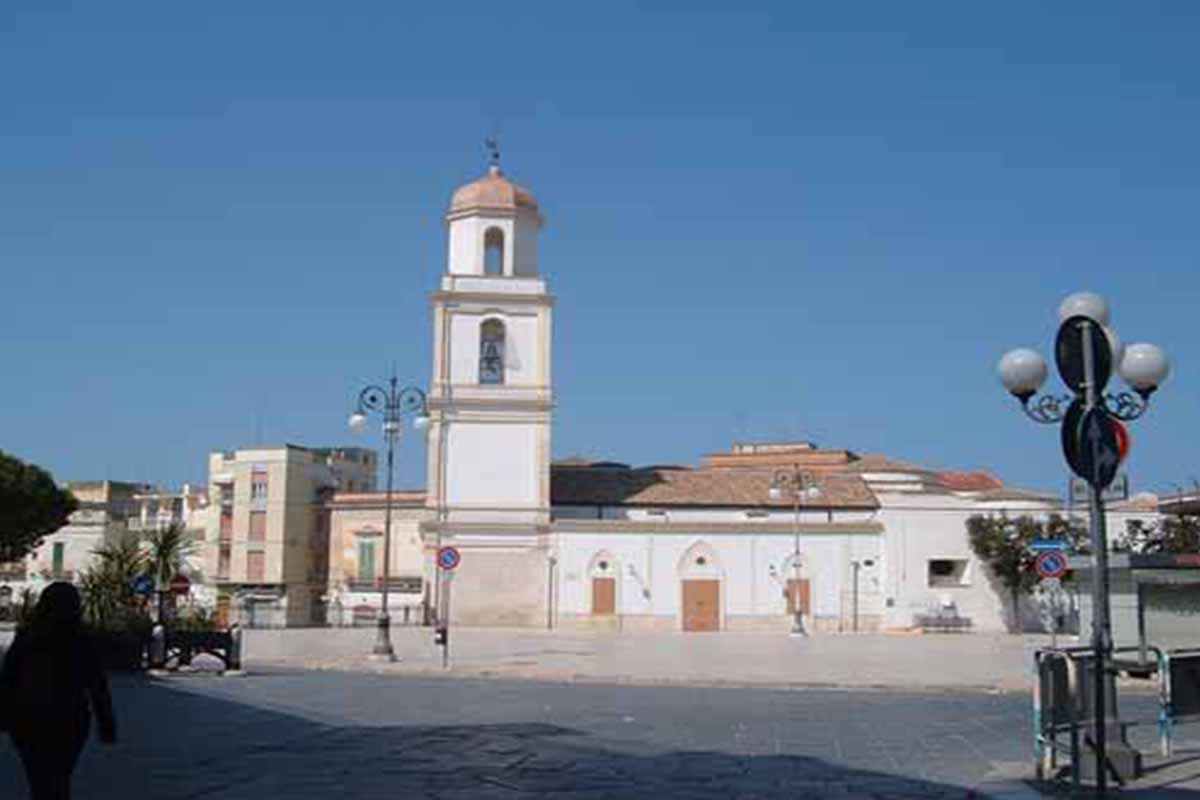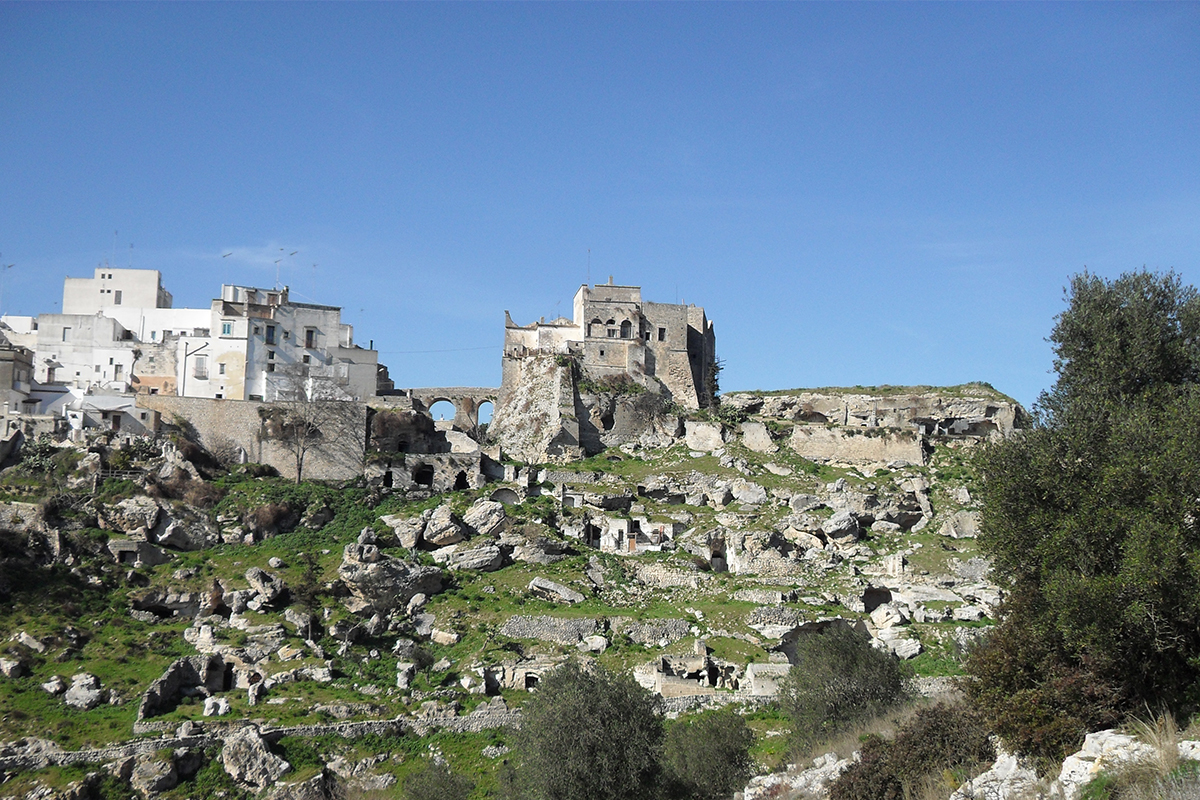Cities
the Trozzula
16 Dicembre 2024
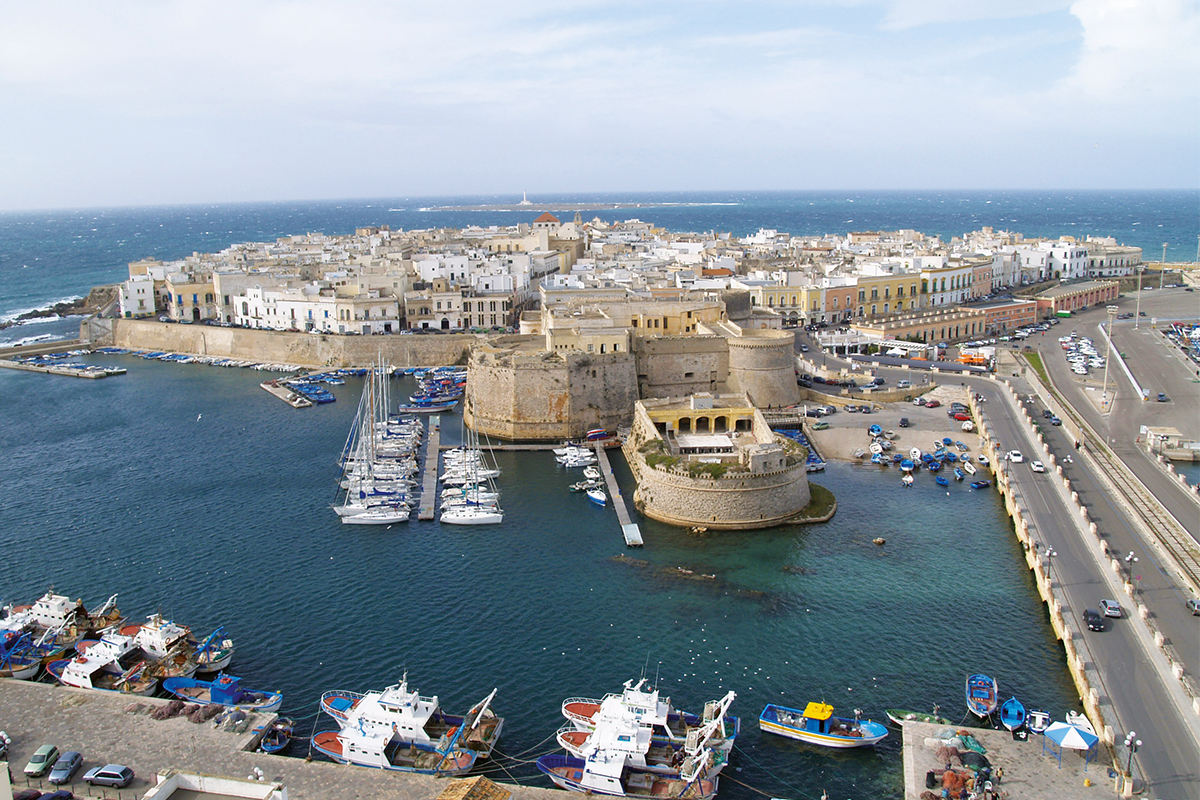
Gallipoli, the "Beautiful City", takes its name from the Greek Kale Polis. This captivating town, situated on an island in the Ionian Sea and connected to the mainland by a bridge, preserves the soul and beauty of its past. Gallipoli’s origins are uncertain: some attribute it to the Greeks, others to the Messapians, but what is certain is that every alley, every stone, tells stories of distant times.
Follow me through the streets of the historic center, a true Byzantine-era labyrinth designed to disorient invaders and protect the city. Here, among narrow streets and courtyards, stands the majestic Aragonese Castle with its Rivellino and powerful bastioned walls, witnesses of a time when Gallipoli was impenetrable. Let’s stroll among the sumptuous 17th and 18th-century noble palaces, with their wrought-iron balconies and elaborately decorated facades.
Beneath the city’s foundations, we discover the underground olive oil mills, where in the 1600s lamp oil was produced and exported throughout Europe for lighting. Now, I take you to the Cathedral of Saint Agatha, which dominates the historic center with its intricately decorated baroque facade made of local stone.
Our journey continues through monasteries and Confraternity Oratories, established in the 17th century as guilds for trades and crafts. Each oratory reflects the devotion and traditions of its members. The Oratory of Santa Maria della Purità, associated with the vastagi or dock workers, is a treasure trove of beauty: intricately carved stalls, paintings, and a maiolica floor tell the story and faith of Gallipoli. Not far away, the Oratory of the Holy Crucifix, home to the uttari or barrel makers, with its sienna-colored facade, houses a magnificent wooden statue of the Dead Christ, a true masterpiece of incomparable beauty.
And now, let’s immerse ourselves in "The Pan": this is how the people of Gallipoli refer to their historic center, as seen from above, the circular village with its bridge resembling the handle of a frying pan.
Now, I’ll take you to discover the flavors of Gallipoli, where the sea meets tradition. Our pride is scapece gallipolina, small bluefish fried and marinated with vinegar, saffron, and breadcrumbs in ancient wooden vats—a recipe with five centuries of history. In any trattoria in the historic center, you can savor purpu alla pignata, octopus cooked in a clay pot with tomatoes and potatoes, or the famous ciaudedda gallipolina, a feast of fish, potatoes, and tomatoes that encapsulates all the aromas of the Ionian, or even a freshly baked pasticciotto filled with cream.
To visit: Aragonese Castle, Cathedral of Saint Agatha, Oratory of Santa Maria della Purità, Oratory of the Holy Crucifix, Underground olive oil mills, Ancient Pharmacy, Historic Palaces, The Old Town “The Pan”.
Passion Friday
Procession of the Addolorata
The Procession of the Addolorata inaugurates the rites of Passion Friday, a moment of deep spirituality involving the entire community. The procession begins from the Church of Santa Maria del Monte Carmelo and Misericordia on via Carmine Fontò, and proceeds to the Cathedral, where the statue of the Madonna Addolorata participates in the solemn liturgical celebration led by the Bishop. After the performance of the Oratorio Sacro, the procession travels through the entire urban fabric of the city.
One of the most evocative moments occurs around 9:00 PM when the Madonna Addolorata crosses the 17th-century bridge that connects the new town to the old village. Here, on one of the bastions overlooking the port, the priest blesses the people and the fishing boats, a symbolic gesture of protection and hope. The procession then continues sadly through the narrow streets, eventually returning to the Church of Santa Maria del Monte Carmelo.
-Date: April 11, 2025
-Time: 12:00 PM
-Location: Church of Santa Maria del Monte Carmelo
Good Friday
Procession of the Mysteries and the Tomb of Christ
The Procession of the Mysteries and the Tomb of Christ is one of the most engaging and tradition-rich events of Holy Week. The statues of the Dolorous Mysteries, kept in the sacristy, are carried in procession from the evening of Good Friday until the early hours of Holy Saturday. This religious procession is accompanied by the characteristic sound of the trozzula, the lanterns that light the way, and the mournful roll of the untuned drum.
The Tomb of Christ (known in the local dialect as Urnia) each year represents a different model chosen by the Confraternity of the Holy Crucifix, though the theme of the Deposition remains fixed. Alongside the Tomb, the statues of the Mysteries and the statue of the Madonna Addolorata, carried in procession by the Confraternity of Santa Maria degli Angeli, march in the procession.
-Date: April 18, 2025
-Time: 5:00 PM
-Location: Oratorio Confraternale del SS. Crocifisso
Holy Saturday
Procession of Maria Desolata
In the early hours of Holy Saturday, the Procession of Maria Desolata begins at the Church of Purity, organized by the Confraternity of Santa Maria della Purità. This rite is among the most touching of Holy Week, characterized by the presence of hooded figures wearing white robes, yellowish-green capes, and red cords, who precede the statues of the Dead Christ and Maria Desolata.
The statue of Maria Desolata, a fine 19th-century papier-mâché work, depicts her sitting at the foot of the Cross in a composed attitude of sorrow. The procession starts in the darkness of the night at 3:00 AM, illuminated only by four lanterns and accompanied by the heartrending sound of the trumpet and the roll of the drum.
The most emotional moment is the encounter between the Madonna Desolata and the Dead Christ, which takes place in front of the Church of Purity, with the sea and beach as a backdrop. Here, immersed in a silence filled with religiosity, the faithful take part in a moment of prayer and emotion, a sign of the deep faith of this community.
-Date: April 19, 2025
-Time: 2:30 AM
-Location: Church of Purity
Good Friday / April 11, 2025
• GALLIPOLI / Venerdì dell'Addolorata / Chiesa di Santa Maria del Carmelo / 12:00
Holy Thursday / April 17, 2025
• GALLIPOLI / The confraternities, in their robes, will processionally visit the altars of the Reposition set up / Borgo antico / 19:30
Good Friday / April 18, 2025
• GALLIPOLI / The confraternities in procession robes visit the altars of the Reposition set up in the borgo antico / Borgo antico / 9:00
• GALLIPOLI / Processione dei Misteri e del Cristo Morto / Oratorio Confraternale del SS. Crocifisso / 17:00
Holy Saturday / April 19, 2025
• GALLIPOLI / Processione della Madonna Desolata / Chiesa della Purità / 2:30
Easter Sunday / April 20, 2025
• GALLIPOLI / Scoppio della Caremma / Borgo Antico / 12:00
CONFRATERNITY OF THE SS. CRUCIFIX
The Oratory of the SS. Crocifisso was built between 1741 and 1750 at the expense of the confraternity, following the purchase of land from the Dominican fathers, who in that place had an uncultivated garden with a small house, often used as a meeting place for women of ill repute. The oratory was designed by artillery lieutenant Carlo Multò, serving at the Regio Castello di Gallipoli. The previous church, located near the church of San Francesco d'Assisi, had been seriously damaged by storm surges. The oratory is the seat of the Confraternita del SS. Crocifisso, formerly under the title of San Michele Arcangelo, to which coopers and barrel makers were predominantly affiliated.
In 1834, following the fire of the nativity scene set up beside the altar, the confraternity's stalls were damaged, and, among other things, the statue of the Cristo Morto was destroyed. The sodality's records show that in 1834 the brothers rebuilt all the wooden stalls, and one member donated the Cristo Morto statue, which is still carried in procession on Venerdì Santo in artistic compositions recalling the theme of the Deposizione. In 2005, restoration and cleaning work on the Cristo Morto revealed that the statue is carved from walnut wood and that between the paint and the wood there is a layer of minium—a material used for waterproofing boats—which protected the image from woodworms and prevented the wood from deforming and damaging the paint layer. In 2006, at the full expense of the confraternity, the exterior of the church was restored to its original colors. The confraternity's attire consists of a red tunic and hood symbolizing Christ's Passion and a mozzetta, a distinctive light blue mantle featuring the two effigies of the SS. Crocifisso and San Michele Arcangelo. Only during the Venerdì Santo procession do the confraternity members wear a crown of thorns woven from wild asparagus stems, in memory of the one worn by Christ, and walk with their faces covered as a sign of penance.
CONFRATERNITY OF SANTA MARIA DEGLI ANGELI
ORIGINS
The origins of this confraternal oratory and its namesake confraternity derive from the altar of Santa Maria di Carpignano, located in the pre-existing church of San Giovanni Battista, whose cult was introduced by the Lubelli family of Serrano. They erected an altar together with the ecclesiastical benefice founded on May 16, 1636, under the same title and jus patronato. The cult is directly linked to the 1568 discovery in the San Giovanni cave in Carpignano Salentino (LE) of a Byzantine image depicting the Madonna and Child, commonly known as Madonna della Grotta or Madonna di Carpignano. Since 1662, in the church of San Giovanni Battista, besides the confraternity under the same title, there is evidence of a congregation named Santa Maria di Carpignano, whose prefect was recorded as Giovanni Fajulo. A key figure in the history of our oratory is Sebastiano Sandalo, a member of the same congregation, who was responsible for its construction and later expansion. It was mandated that the confraternity members erect (1663) their own oratory within two years, under penalty of losing their rights to Sandalo’s bequest, "under the title of the Vergine Santissima di Carpignano, which is in the Chiesa di San Giovanni of this city. There, the brothers from outside the city and fishermen could gather on established days, according to the rules, to pray, practice mortifications, attend Mass, receive the Holy Sacraments, and perform all other pious works as dictated by these rules." Within the set deadline (1665), the new oratory was built, but it was not named Santa Maria di Carpignano but Santa Maria degli Angeli. This is evidenced by the fact that the congregation's original name initially appears alongside (and preceded by) Santa Maria degli Angeli before being completely replaced by the latter a few years later (1669). From the pastoral visit of Mons. Filomarini on August 29, 1715, we learn that Mons. Montoya established the Santa Maria degli Angeli congregation, dictating its statutes and aggregating laypeople from the fishing and farming trades. The presence of a confraternity under the same title is also confirmed. The brothers wore a white tunic with a white hood and a violet-colored mozzetta with a painted image of the Beata Vergine Maria. The mozzetta was replaced in 1769 with the current navy blue one. In that same year, the categories of artists and artisans were incorporated.
THE BUILDING
The building, with a single nave, is located along the perimeter of the old town of Gallipoli, on the south-southwest side, facing the islets of Campo dei Piccioni and Isola di Sant'Andrea. On the facade of the oratory is a beautiful majolica panel created in 1942 by the Neapolitan company Raffaele Vaccarella, depicting the Madonna Assunta in cielo, replacing the fresco painted in 1875 by Giuseppe Pagliano. Inside, four large paintings decorate the side walls, created in the 18th century by Diego Oronzo Bianchi, a painter from Manduria: The Multiplication of the Loaves and Fishes, The Distribution of the Loaves, The Dispute Among the Church Doctors, and The Wedding at Cana. Below, surrounding the main hall, are the wooden stalls with gilded frames and floral motifs where the confraternity members sit, along with the Administration's bench. In the second half of the 19th century, the old wooden altar was demolished to make way for a new altar in pietra leccese, stuccoed in faux polychrome marble, created in 1876 by the stucco artist Mastro Luigi Schiavone from Monopoli. At the center of the altarpiece is a painting of the Madonna degli Angeli (17th century), attributed to the workshop of Gian Domenico Catalano. On either side, in their respective niches, stand the four polychrome wooden statues of the confraternity’s patrons: Sant'Andrea, protector of fishermen; Sant'Isidoro, patron of farmers; San Giuseppe, protector of artisans; and San Giovanni Battista, protector of artists. Among the sculptural works, placed in special wall niches, are 19th-century papier-mâché statues by the famous Achille De Lucrezi, who in 1866 created Il Crocefisso and a Cristo Morto, and in 1895 the Madonna Assunta in cielo. Another statue depicting the Madonna degli Angeli was commissioned in Naples in 1825. The simulacrum of the Addolorata (a dressed mannequin) was donated in 1824. At the back of the church is the choir, where the 18th-century organ, the work of the Taranto organ builder Giuseppe Corrado, was placed.
THE PROCESSIONS
The confraternity, in addition to organizing the processions of the Assunta (August 14), patroness of the confraternity; Sant’Andrea (November 29), and San Luigi (June 20), invited by the Associazione Cattolica San Luigi, also participates with the SS. Crocefisso confraternity in the procession of the Cristo Morto e dei Misteri on Venerdì Santo, carrying through the streets of Gallipoli the statue of the Vergine Addolorata.
Historical research and text by confraternity member Antonio Faita.
CONFRATERNITY OF SANTA MARIA DELLA PURITÀ
In the 16th century, under the diocese of Bishop Giovanni Montoya y Cardona (1659-1666), the Congregazione o Confraternite dei Facchini was established under the title of Santa Maria della Purità between 1662 and 1665. During those same years, the oratory, with a single nave, was built, featuring a masonry choir on the back wall, where the arches were frescoed with the four Evangelists. The hall was later expanded, and a new Roman-style marble altar was built, along with the choir and the organ on the side. The confraternity's statutes were approved by Ferdinando IV di Borbone on December 31, 1768, after being reviewed by the Cappellano Maggiore del Regno. They were titled: Regole per i confratelli Bastagi congregati sotto il titolo di S. Maria della Purità nella città di Gallipoli. The confraternity’s rule required that its foundational members be from the dockworkers’ guild, known as vastagi or bastagi, and those involved in the production of lamp oil, though there were rare exceptions. By special grace, other artisans or civilians could also be admitted. The confraternity members enjoyed several benefits: all members, their wives, and unmarried daughters had the right to be considered part of the confraternity, along with the right to burial and the suffrage of forty Masses within one year. Additionally, members over seventy years old were exempt from work but continued to receive the same wages as an active worker. Widows and the infirm were also granted a daily subsidy equivalent to a worker’s earnings. During that period, confraternities were true mutual aid societies, compensating for the social shortcomings of the time and ensuring better living conditions. The confraternity’s attire consists of a white tunic and hood, along with a straw-yellow mozzetta trimmed in red and a red cord.
Cities Info
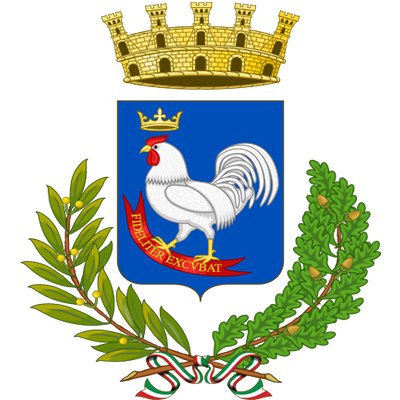
Municipality of Gallipoli
T + 39 0833 275501
Municipal Police
T + 39 0833 275545
Tourist Information Point
Via Antonietta De Pace, 86
T +39 0833 262 529
info.gallipoli@viaggiareinpuglia.it
Highlighted Municipalities


 it
it en
en fr
fr es
es de
de pt
pt